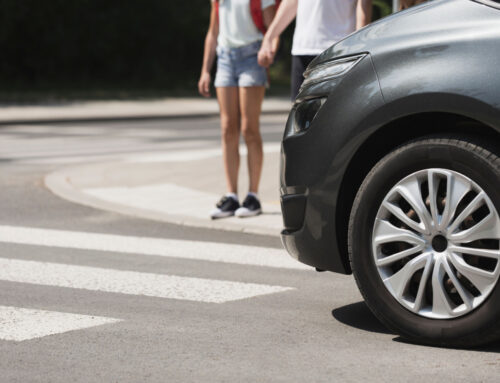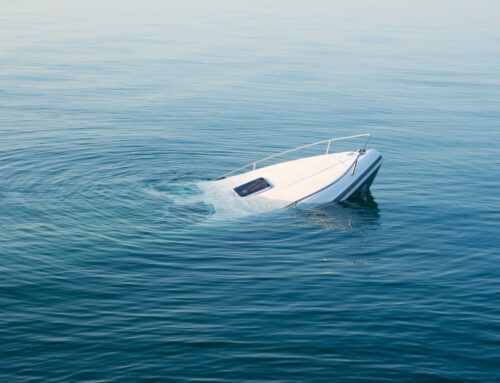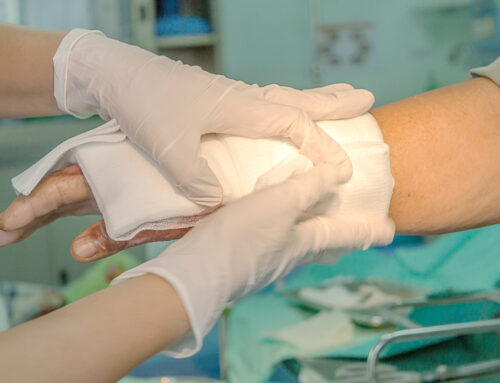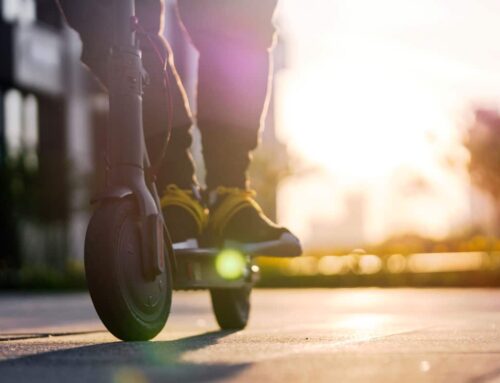For many, it is the vacation of a lifetime. No other event is quite like Mardi Gras in New Orleans, in terms of culture, flavor, and excitement. However, as fun as it is to watch the parades, pedestrians are urged to use caution, as the annual celebration comes with increased danger. In 2019, a car plowed into a group of bicyclists and pedestrians, killing two and injuring seven others. The accident happened on Esplanade Avenue, where the vehicle reportedly plowed through the bike lane at 80 miles an hour, striking two separate groups of cyclists and smashing other cars. The driver, 32-year-old Tashonty Toney, attempted to flee, traveling several blocks away because citizens stopped him, thinking they were helping someone who had just been involved in a single-vehicle accident.
Toney was found to have a blood alcohol concentration of .2, far above the legal limit of .08. He was later sentenced to 90 years in prison for the accident. He said at his sentencing that he rarely drank, but that he had been celebrating his birthday when the accident occurred. He did not remember getting into his car. He did not remember hitting vehicles. And he did not remember hitting nine people over the course of several blocks.
The Accident came just two years after another drunk driver drove a pickup truck into a crowd of people near the intersection of Orleans and Carrolton Avenues, injuring 28. 21 people suffered injuries serious enough to require hospitalization. The driver’s blood alcohol concentration was .232 at the time when he injured the people — who ranged in age from 3 to in their 40s. The driver then ran into the crowd during the Krewe of Endymion Parade. Endymion is one of the most popular and family-friendly parades of the whole Carnival season.
An unfortunate mixture of big crowds, vehicles, and alcohol consumption can be a dangerous mix at Mardi Gras. Read on for more information about the elements of this dangerous combination and how to keep you and your family safe during the Mardi Gras festivities.
The Dangers of Drunk Driving
The consumption of alcoholic beverages is a common aspect of Mardi Gras. While a lot of people understand that they should give up their keys when they drink, relying instead on sober friends, public transportation, or rideshares to get from place to place, many people don’t. According to the National Highway Traffic Safety Administration, drunk driving claims a life every 50 minutes in the U.S., equaling more than 10,000 deaths a year. Alcohol impairs many of the functions that a person needs for safe driving, and this impairment doesn’t begin when one’s blood alcohol concentration (BAC) reaches the legal driving limit of .08. It actually begins with the first drink.
- At .02 BAC, which is the equivalent of one drink, a person begins experiencing some loss of judgement, loss in the ability to perform two tasks at the same time, and a decline in visual functions needed to track a moving target.
- By .05 BAC, a person is beginning to exhibit exaggerated behavior. They’re also experiencing reduced coordination, a diminished ability to track movement, difficulty steering their vehicle, and a reduced response to emergency driving situations.
- At the legal limit of .08 BAC, a person is having difficulty detecting danger and is suffering impairment to judgement, reasoning, self-control, and memory. When driving, this individual may have a marked decline in concentration and the ability to control speed. He or she may also be experiencing reduced information processing abilities, such as signal detection and visual search.
- At .15 BAC, which is still considerably lower than the BACs of the drivers in the two accidents discussed above, a person is suffering a major loss of balance. Vomiting may occur. A driver with this level of intoxication will show significant impairment in his or her ability to control the vehicle, attention to the task of driving, and the necessary visual and audio processing to drive safely.
Remember that, while many people think that consuming large quantities of alcohol during Mardi Gras is an expected part of the festivities, public drunkenness is the leading cause of arrests during the event. Staying sober is your best opportunity to enjoy the sights and sounds of Mardi Gras. If you are caught passed out on a bench or urinating on the street, you will likely experience Mardi Gras from a jail cell.
Driving Distractions
The big crowds, human eccentricities, music, and brightly colored floats are part of what makes Mardi Gras fun. However, they’re the second element of the dangerous cocktail that the event brings to the city streets. Driving distractions are anything that draws the driver’s focus away from the task of driving. There are three types of driving distractions:
- Manual distractions are those that require a driver to take his or her hands from the wheel.
- Visual distractions are those that draw the driver’s eyes from the road.
- Cognitive distractions are those that pull a driver’s mind from the task of driving.
In addition to these designations, there are also designations as to where the driving distraction occurred. Internal distractions are those that exist within the vehicle. Examples of internal distractions include visiting with other passengers in the car or adjusting vehicle or stereo controls. External distractions are those that are occurring outside of the vehicle, such as billboards, traffic, and crowds of people heading to watch a parade. While texting is a commonly discussed driver distraction these days — and a dangerous one due to being not only a manual distraction, but a visual and cognitive distraction as well — the true danger of Mardi Gras is the external distractions. While watching a group of brightly dressed parade-goers, a driver may fail to attend to traffic ahead of him or her.
Facts About Pedestrian Accidents
The third element in our dangerous Mardi Gras mix is the amount of foot traffic. Around 6,000 people are killed in pedestrian accidents each year in the U.S., and thousands more are injured. Pedestrian deaths account for around 16 percent of all traffic crash fatalities. About 20 percent of the children aged 14 and under who are killed in traffic accidents each year are pedestrians. 73 percent of pedestrian accidents occur outside of an intersection, and nearly one in ten of these accidents occur off of the roadway in locations such as bicycle lanes, the shoulder of the road, sidewalks, driveway accesses, and medians. A quarter of these accidents occur in the springtime months, and more pedestrian accidents occur in the dark than during the daytime. Nearly half of these accident involve either a driver or a pedestrian who is alcohol impaired. In about one-fifth of pedestrian accidents, the driver leaves the scene.
The severity of a pedestrian’s injuries after being struck by a vehicle depend on a few factors, such as:
- The speed the driver was traveling at when the accident occurred. It’s a common sense reality that the faster the vehicle is traveling at the point of impact, the harder that impact will be.
- The size of the pedestrian. Pedestrian traffic accidents are often more deadly for children and smaller-sized adults because of their height in relation to the impact point of the vehicle. The impact point will often strike a taller adult in the stomach, hips, or legs, resulting in lower extremity or abdominal injuries. However, the impact point for a child will occur to the chest or head. Head injuries are the most common cause of pedestrian deaths.
- The size of the vehicle. Larger vehicles have a higher impact point. Again, this is the difference between the vehicle making impact with a person’s legs or hips, or making impact with a person’s chest or head.
Safety Tips for Mardi Gras
All of this is not to say that one should not enjoy Mardi Gras for all it is — drinking, music, fun. However, preparations should be made in order to keep the event fun and not become a Mardi Gras statistic. Here are some tips from various sources on how to do that.
From Mardi Gras New Orleans:
- Do not park in front of driveways, fire hydrants, or other places where you are not normally allowed to park. Not only does this create access issues for residents and emergency responders, but it also creates obstacles that make it hard for other drivers to see pedestrians who may be stepping into the road.
- Keep your children close. Don’t let them wander off, and ensure that they — and you — stay safe behind the parade barriers.
- If your children are viewing the parade from a ladder, be sure it is placed many feet behind the curb to avoid the ladder being inadvertently knocked into the street by those walking past.
- Keep your phone put away while walking to the parade. Phones can be easy targets for thieves as parade-goers walk and text. Additionally, the phone creates a distraction for the pedestrian and makes him or her far less likely to notice hazards such as a car approaching at a high speed.
- Because of the size of the event and the number of people in attendance, it is easy to become separated from your group and to get lost. Make sure everyone in your group has a designated place to meet if this happens.
From the Jefferson Parish Sheriff’s Office:
- Teach your child his or her name and phone number, or affix this information to the inside of his or her clothing so that if he or she becomes separated from you, others will be able to assist.
- Teach your child to be calm if they become lost and to find a uniformed police officer to help. If there is no uniformed police officer in the area, teach them to go to another parent with children for help.
- Do not allow your children to walk or play in the street. Find an area with barricades and stand behind them.
- Never run after candy that has been thrown.
From the National Highway Traffic Safety Administration:
- Walk on a sidewalk or path if one is available. Otherwise, walk on the shoulder of the street, facing traffic.
- Stay alert. Avoid distractions such as your cell phone or the activities of others until you arrive at the place where you are planning to watch the parade. This applies to both drivers and pedestrians.
- Never simply assume that a driver sees you, as he or she may be distracted or alcohol impaired. Attempt to establish eye contact with the driver as he or she approaches to ensure that you have been seen. If you are unable to establish eye contact or the driver seems to be approaching quickly, attempt to get out of the vehicle’s path.
- Be predictable as a pedestrian. Only cross the road at crosswalks or intersections where drivers expect to see pedestrians.
- Alcohol and drugs aren’t just a danger when driving but when walking as well as they affect the ability to pay attention and to make good judgments.
- As a driver, assume there are pedestrians everywhere. Expect them to step out in front of you and be prepared to stop for them.
- Remember that parade routes are closed to vehicles until after the parade is over. Plan accordingly and give yourself plenty of time to be where you want to be without speeding to get there.
- Stay focused on the task of driving and travel with the realization that there may be children and adults running into the street. There is plenty of time to take in the sights when you are not behind the wheel.
Follow these tips to ensure that your Mardi Gras experience is as fun and exciting as you intend for it to be. If you are injured in a car accident in New Orleans that was someone else’s fault, let us help you understand your legal options. Call Allan Berger & Associates at 504-526-2222 or contact us online for a consultation.







